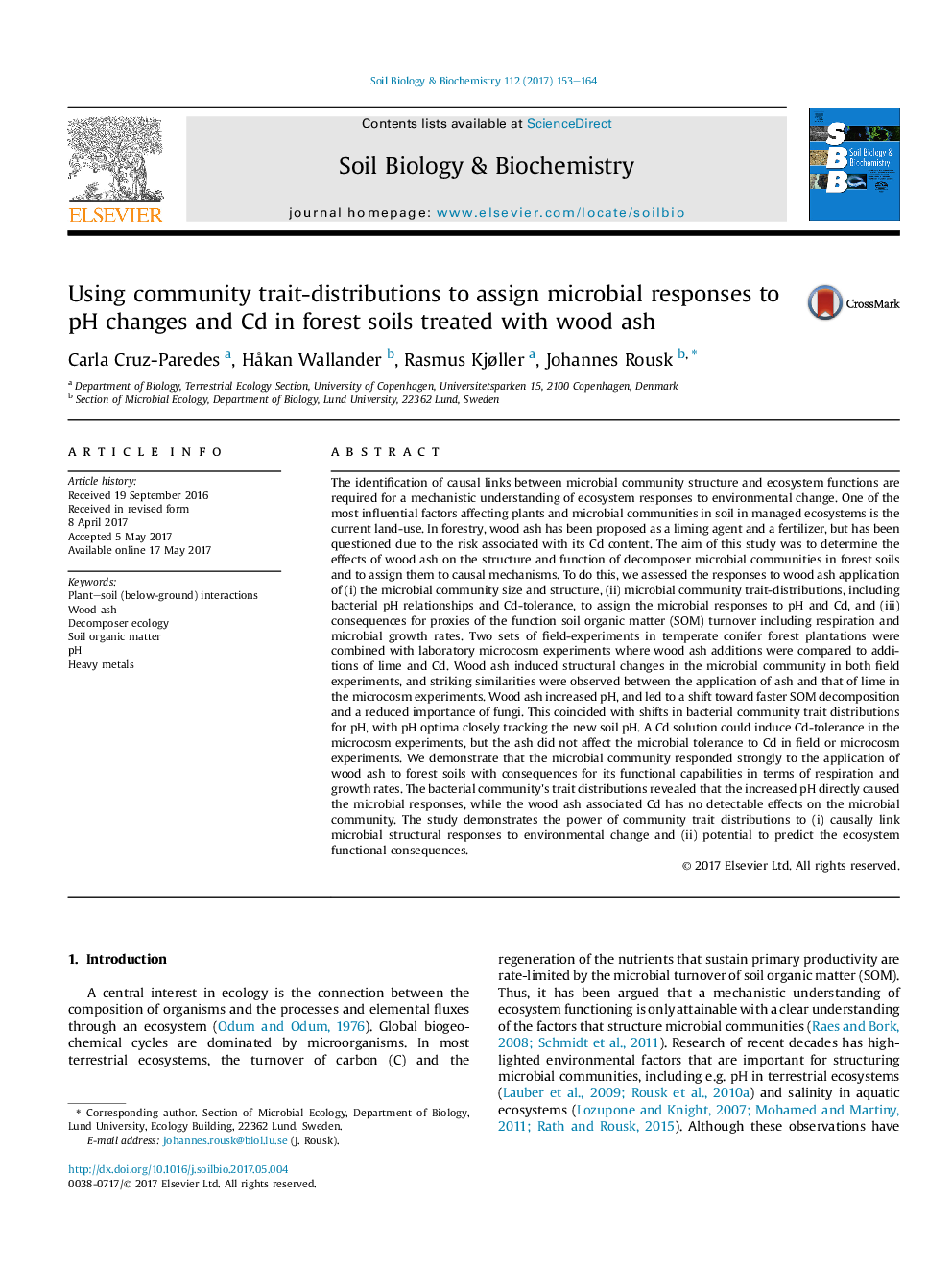| Article ID | Journal | Published Year | Pages | File Type |
|---|---|---|---|---|
| 5516346 | Soil Biology and Biochemistry | 2017 | 12 Pages |
â¢We investigated the soil microbial responses to wood ash in forest soils.â¢Field and lab experiments were combined with approaches to determine community trait distributions.â¢Ash induced pronounced changes in microbial growth, community structure and respiration.â¢We compared responses to ash to those of Cd and lime additions in microcosm experiments.â¢pH tolerance of bacterial communities responded to ash while Cd tolerance was unaffected.
The identification of causal links between microbial community structure and ecosystem functions are required for a mechanistic understanding of ecosystem responses to environmental change. One of the most influential factors affecting plants and microbial communities in soil in managed ecosystems is the current land-use. In forestry, wood ash has been proposed as a liming agent and a fertilizer, but has been questioned due to the risk associated with its Cd content. The aim of this study was to determine the effects of wood ash on the structure and function of decomposer microbial communities in forest soils and to assign them to causal mechanisms. To do this, we assessed the responses to wood ash application of (i) the microbial community size and structure, (ii) microbial community trait-distributions, including bacterial pH relationships and Cd-tolerance, to assign the microbial responses to pH and Cd, and (iii) consequences for proxies of the function soil organic matter (SOM) turnover including respiration and microbial growth rates. Two sets of field-experiments in temperate conifer forest plantations were combined with laboratory microcosm experiments where wood ash additions were compared to additions of lime and Cd. Wood ash induced structural changes in the microbial community in both field experiments, and striking similarities were observed between the application of ash and that of lime in the microcosm experiments. Wood ash increased pH, and led to a shift toward faster SOM decomposition and a reduced importance of fungi. This coincided with shifts in bacterial community trait distributions for pH, with pH optima closely tracking the new soil pH. A Cd solution could induce Cd-tolerance in the microcosm experiments, but the ash did not affect the microbial tolerance to Cd in field or microcosm experiments. We demonstrate that the microbial community responded strongly to the application of wood ash to forest soils with consequences for its functional capabilities in terms of respiration and growth rates. The bacterial community's trait distributions revealed that the increased pH directly caused the microbial responses, while the wood ash associated Cd has no detectable effects on the microbial community. The study demonstrates the power of community trait distributions to (i) causally link microbial structural responses to environmental change and (ii) potential to predict the ecosystem functional consequences.
